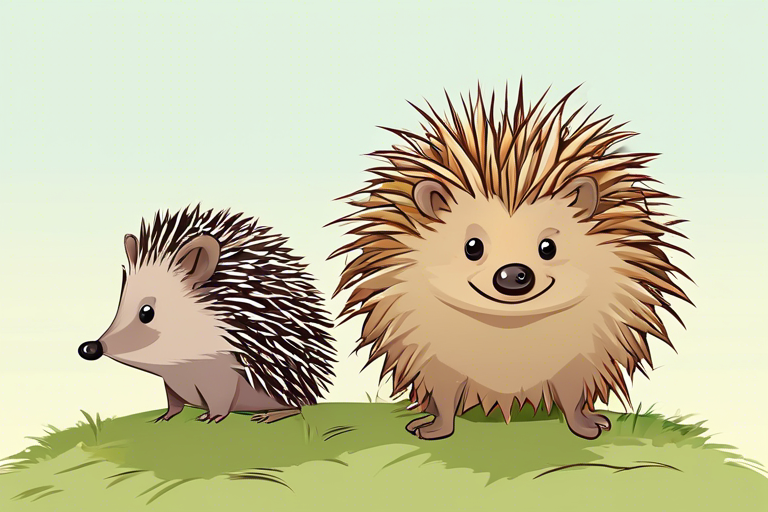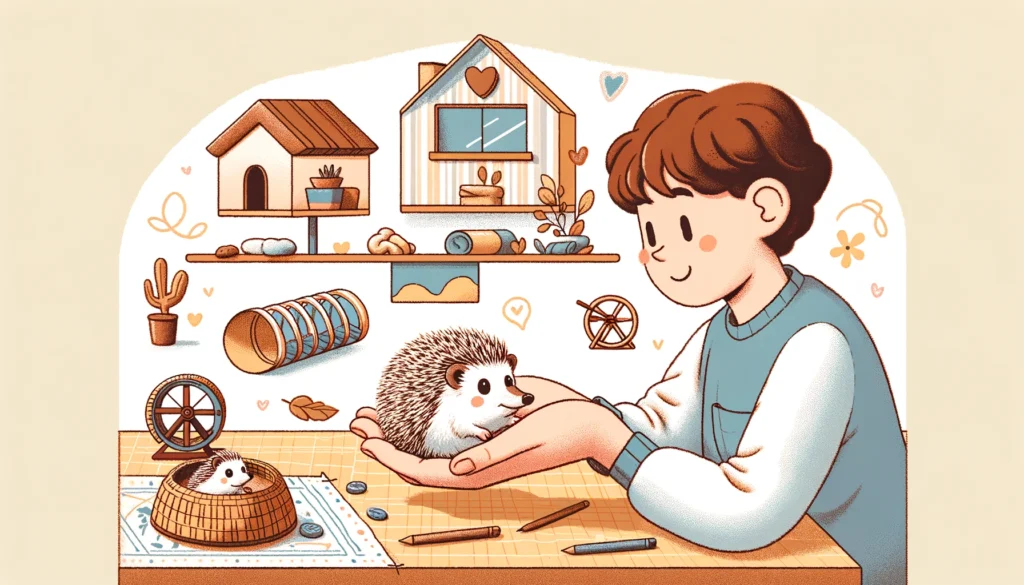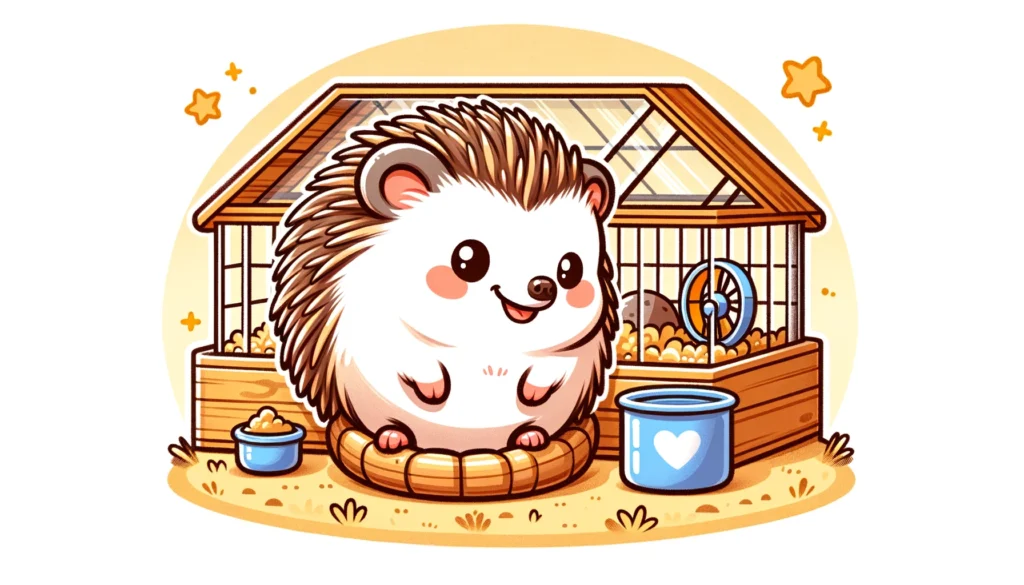
When it comes to prickly creatures, the debate of hedgehog vs porcupine often arises, with many people confusing the two. Although they share some similarities, there’s a significant difference between porcupine and hedgehog. This article will delve into the hedgehog v porcupine discussion, exploring the unique characteristics that answer what is the difference between a hedgehog and a porcupine. So, get ready to understand whether it’s a porcupine or hedgehog you’re spotting, as we explore these fascinating creatures!
Physical Characteristics of Hedgehogs and Porcupines
Hedgehogs may both have spiky exteriors, but their physical characteristics, including size and body structure, differ in several ways. Do hedgehogs have quills? Yes, hedgehogs have small bodies, usually measuring between 5 to 12 inches in length, and are covered in short, prickly spines known as quills, which are hollow and made of keratin. These quills provide protection against predators and can be raised or flattened depending on the hedgehog’s state of mind.
Porcupines, on the other hand, are larger in size than hedgehogs, with some species reaching up to 30 inches in length. Their bodies are covered in long, sharp spines called quills, which are a key part of their defensive mechanism. Unlike hedgehog quills, porcupine quills are barbed, making them difficult to remove once embedded in an attacker. Porcupines can also make their quills vibrate, creating a rattling sound as a warning to predators.
Similarities between Hedgehogs and Porcupines
Although hedgehogs and porcupines have distinct physical characteristics, they do share some similarities. Both creatures are mammals and belong to the order Erinaceomorpha, which means they are distant relatives. They are both nocturnal animals, preferring to come out and explore under the cover of darkness. Additionally, hedgehogs and porcupines have poor eyesight but compensate for it with a keen sense of smell and hearing.
Another shared trait between hedgehogs and porcupines is their solitary nature, which is a significant aspect of the porcupine hedgehog difference. They are independent creatures, often roaming alone in search of food and shelter. Both species are also known for their ability to roll into a tight ball for defense when they feel threatened. This behavior exposes their spiky exterior, making it difficult for predators to attack them.
Main Differences between Hedgehogs and Porcupines – Quills, Spines, and Fur
The most noticeable hedgehog vs porcupine difference lies in their quills and spines. Hedgehogs have quills that are shorter and more flexible, while porcupines have longer and sharper spines. Hedgehog quills are hollow and can be raised or flattened, depending on the hedgehog’s mood. On the other hand, porcupine spines are solid and barbed, making them more formidable in self-defense.
Another distinction between these creatures is their fur. Hedgehogs have a dense coat of fur, which helps to insulate them during colder months. Their fur can range in color from light brown to dark gray, depending on the species. Porcupines, however, have a sparse covering of fur, with most of their body being covered in spines. The fur on porcupines is usually a darker shade, providing them with camouflage in their natural habitat.
Reproduction and Life Cycle of Hedgehogs and Porcupines
Hedgehogs, known for their unique reproductive strategies, have a concise breeding season that peaks in the late spring or early summer. During this critical time, male hedgehogs perform elaborate dances and vocalizations to attract females. After successful mating, the female hedgehog undergoes a gestation period of about 35 days before giving birth to a litter of 4 to 6 hoglets.
In contrast, porcupines experience a more prolonged breeding season that spans several months, showcasing their distinct reproductive timing. Males compete for female attention with aggressive behavior displays. Following mating, the female porcupine faces a gestation period of roughly 7 months, after which the porcupettes are born fully developed, with their eyes open and quills ready, displaying an impressive climbing ability within hours of their arrival.
Diet and Feeding Habits of Hedgehogs and Porcupines
The dietary preferences of hedgehogs, as omnivores, differ significantly from porcupines, with hedgehogs consuming a diverse range of foods such as insects, worms, snails, fruits, and even small vertebrates. Their acute sense of smell plays a crucial role in tracking down prey.
Porcupines, on the other hand, are herbivores that primarily feed on a plant-based diet. They consume bark, leaves, twigs, and roots, using their sharp incisors and powerful jaws to gnaw through tough vegetation. Their specialized digestive systems are adept at processing the fibrous plant material to extract essential nutrients.
Habitat and Distribution of Hedgehogs and Porcupines
Hedgehogs inhabit a variety of locations, being native to Europe, Africa, and parts of Asia. They thrive in environments ranging from forests and grasslands to urban areas, where dense vegetation and water sources are plentiful. Their adaptive nature allows them to survive in various climates and settings.
Porcupines boast a wide location range, occupying territories in North America, South America, Africa, Europe, and Asia. Their remarkable adaptability allows them to live in diverse habitats such as forests, deserts, and grasslands, provided they have access to food and appropriate shelter. Their environmental flexibility is a testament to their survival skills.
Defense Mechanisms of Hedgehogs and Porcupines
Both hedgehogs and porcupines have evolved effective defensive mechanisms against predators. Hedgehogs are particularly known for their ability to curl into a tight ball, presenting a spiky exterior that deters attackers. In moments of danger, they protect their vulnerable parts by tucking in their head and limbs and contracting their muscles.
Porcupines, renowned for their defensive mechanism, employ an aggressive strategy when confronted with danger. They will raise their spines and stomp their feet, creating an intimidating warning display. Should this not be enough to deter a predator, the porcupine will swiftly turn and strike with its quill-covered tail. These barbed quills, a hallmark of the porcupine’s defense, are designed to easily penetrate the skin of predators, potentially causing serious injury or infection.
Fun Facts about Hedgehogs and Porcupines
To wrap up our exploration of these prickly creatures, here are some fun facts to help you distinguish between a hedgehog vs porcupine vs echidna:
- Hedgehogs are immune to most snake venoms, making them resistant to snake bites.
- Porcupines can have up to 30,000 quills on their body, each measuring up to a foot long.
- Hedgehogs are excellent swimmers and can cross small bodies of water.
- Porcupines are excellent climbers and are able to navigate through trees with ease.
- Hedgehogs are known to hibernate during the winter months to conserve energy.
Now that you’re familiar with the key differences, you’ll be able to discern whether is a porcupine a hedgehog or is a hedgehog a porcupine with ease. Whether it’s a hedgehog curling into a protective ball or a porcupine brandishing its spines, you can admire the remarkable adaptations that make them truly fascinating animals.


